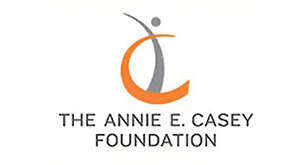CURRENT LEVELS OF TEEN SOCIAL MEDIA USE
Virtually all teens (95%) ages 13 to 17 use social media, with more than 1 in 3 reporting that they use it “almost constantly.” While most U.S. social media platforms require users to be at least 13 years old, nearly 40% of kids ages 8 to 12 use social media. The advisory also noted:
- Adolescents who use social media more than three hours per day face twice the risk of experiencing poor mental health outcomes.
- A recent survey found that eighth and 10th grade students spend an average of 3.5 hours per day on these platforms.
NEGATIVE EFFECTS OF SOCIAL MEDIA ON MENTAL HEALTH AND WELL-BEING
Numerous studies show that higher levels of social media use among children and adolescents are linked to adverse effects, including depression and anxiety, inadequate sleep (which can disrupt neurological development and lead to depression and suicidal behaviors), low self-esteem, poor body image, eating disorder behaviors and online harassment. These risks are greater for girls versus boys and for those already experiencing mental health issues. Additional risks include:
- Nearly 2 in 3 adolescents are “often” or “sometimes” exposed to hate-based content on social media.
- Studies have found a connection between social media cyberbullying and depression among young people.
- Teen girls and LGBTQ youth are more likely to experience cyberbullying and online harassment, which can lead to negative emotions.
ADOLESCENCE IS A VULNERABLE PHASE OF DEVELOPMENT
The mounting evidence regarding social media’s adverse effects on youth is especially concerning given that adolescence is a critical period of development, when different areas of the brain begin to integrate and the prefrontal cortex develops at an accelerated pace. In this phase, the brain is especially open to learning and growing, and teens may have intensified sensitivity to the nature of social media, according to the Surgeon General’s advisory. Adolescence also involves profound physiological changes — these young people are simultaneously navigating increasing autonomy, forming their identities, developing relationships and more. Thus, the potential effects of social media during this vulnerable phase warrant particular attention.
ARE THERE BENEFITS TO USING SOCIAL MEDIA?
In some cases, social media can provide social support from peers or others, which may be especially beneficial for marginalized young people, such as sexual and gender minorities. For instance, according to the Surgeon General’s advisory, social media may boost the mental health of LGBTQ youth by fostering connections with peers, facilitating identity development and enabling social support.
Research also indicates that social media-based mental health interventions may be useful tools for kids and teens, and they may help young people learn to seek help or professional care when needed. In this sense, social media platforms could serve as a gateway to mental health care or at least online social support as a buffer against stressors.
HOW TO PROTECT TEENS ON SOCIAL MEDIA
While social media offers benefits for some, growing evidence of its potential harm to many children and youth has led the Surgeon General to issue an urgent, cross-sector call to action:
FOR POLICYMAKERS
- Strengthen protections to ensure greater safety for children interacting with all social media platforms, such as developing age-appropriate health and safety standards, requiring a higher standard of data privacy for children and strengthening and enforcing age minimums.
- Ensure technology companies share data relevant to the health effects of their platforms.
- Support increased funding for future research on both the benefits and harms of social media use and other technology and digital media use for children, adolescents and families.

